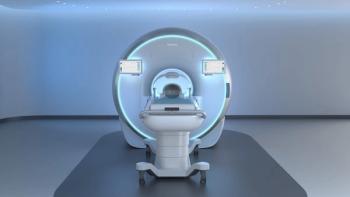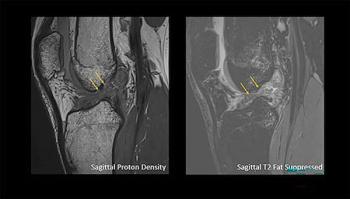
New Radiopharmaceutical Offers Better Tumor Imaging and Staging for Patients with Liver Cancer
Newly created peptide antagonist outperforms standard agonist imaging agent in head-to-head comparison.
In a direct comparison, a new radiopharmaceutical has emerged as a superior imaging agent for patients with neuroendocrine tumors who have cancer that has spread to their liver, according to newly published research.
In testing the radiopharmaceutical 68Ga-DOTA-JR11, researchers from China determined the agent does a better job detecting liver metastases than another somatostatin receptor (SSTR) 68Ga-DOTATATE PET/CT. They published their results in the
“What we’ve learned from this study is that peptides matter,” said lead study author Wenjia Zhu, M.D., a nuclear medicine physician at Peking Union Medical College Hospital in Beijing. “For patients with different metastatic patterns, different peptides should be used. In liver-dominant disease, 68Ga-DOTA-JR11 may be a better choice in tumor staging and re-staging compared to 68Ga-DOTATATE.”
In the treatment of neuroendocrine tumors, SSTRs are the main targets for imaging and radionuclide therapies. They, typically, are imaged with 68Ga-labeled peptides, agonists that link with SSTRs to prompt a response. But, newly developed peptide antagonists have revealed better pharmacokinetics, improved image contrast, higher tumor uptake, and better residence time in recent studies.
The researchers made this discovery through a two-day study with 31 patients. Patients received a 68Ga-DOTATATE intravenous injection on day one and a 68Ga-DOTA-JR11 on the second day. Investigators ran a 40-to-60 minute whole-body time-of-flight PET/CT after each injection on the same scanner. After the scans, they compared physiologic normal-organ uptake, lesion numbers, and lesion uptake for both imaging agents.
Based on that comparison, Zhu’s team determined that 68Ga-DOTA-JR11 had significantly lower physiologic normal-organ uptake of the spleen, renal cortex, adrenal glands, pituitary glands, stomach wall, normal liver parenchyma, small intestine, pancreas, and bone marrow. Additionally, 68Ga-DOTA-JR11 also detected more liver lesions with a higher target-to-background liver lesion ratio, but 68Ga-DOTATATE found more bone lesions.
With 68Ga-DOTA-JR11, the team said, more options now exist with imaging, and their work provided greater clarity about how the imaging agents performs and compares to other agents.
“With antagonists, we now have an alternative to agonists,” Zhu said. “However, there is still not much evidence about the performance of PET/CT imaging with SSTR antagonists. Hence, we designed this prospective study.”
Newsletter
Stay at the forefront of radiology with the Diagnostic Imaging newsletter, delivering the latest news, clinical insights, and imaging advancements for today’s radiologists.




























